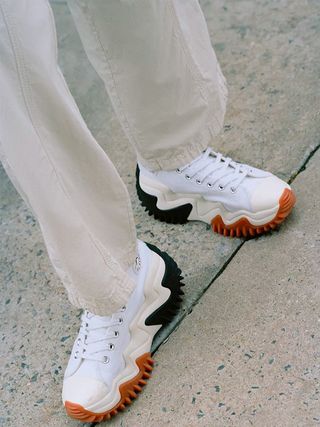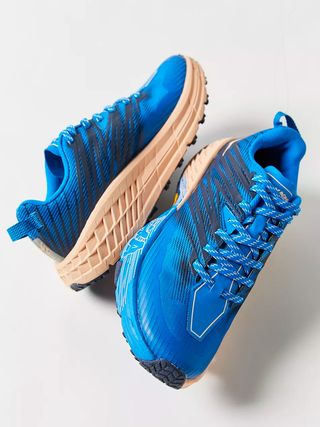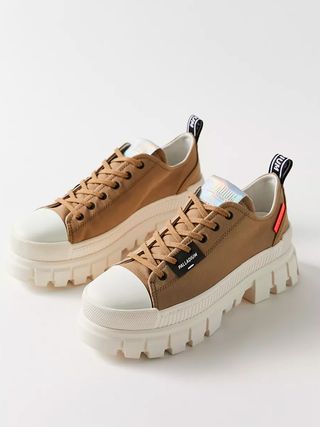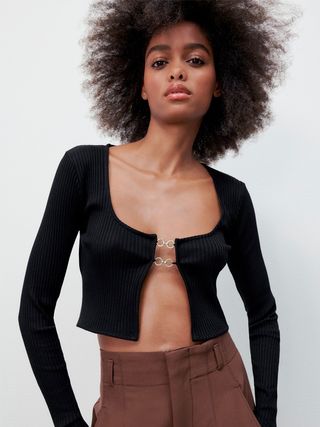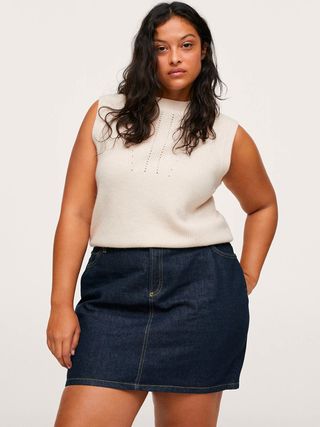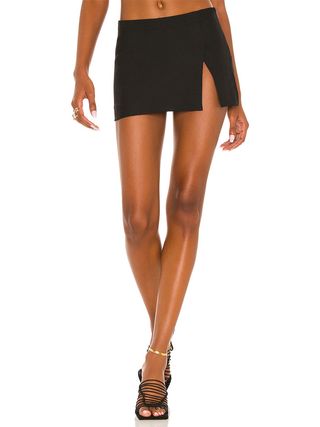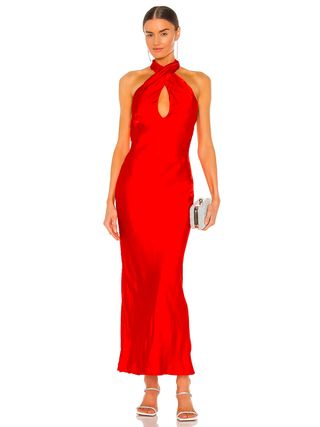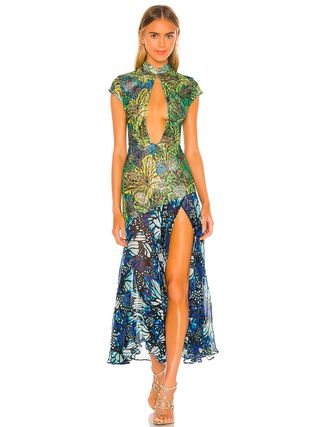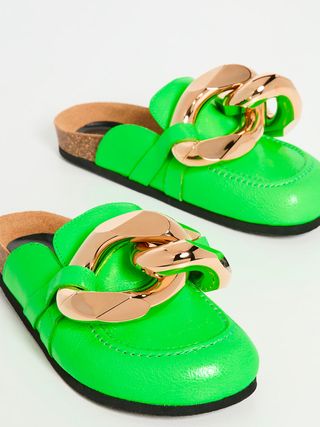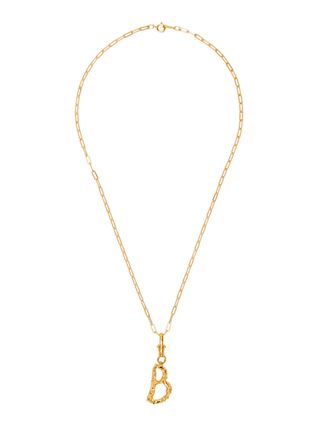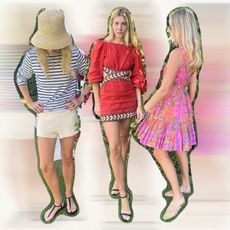The Metaverse Has Arrived—Here's How It's Changing the Way We Dress IRL
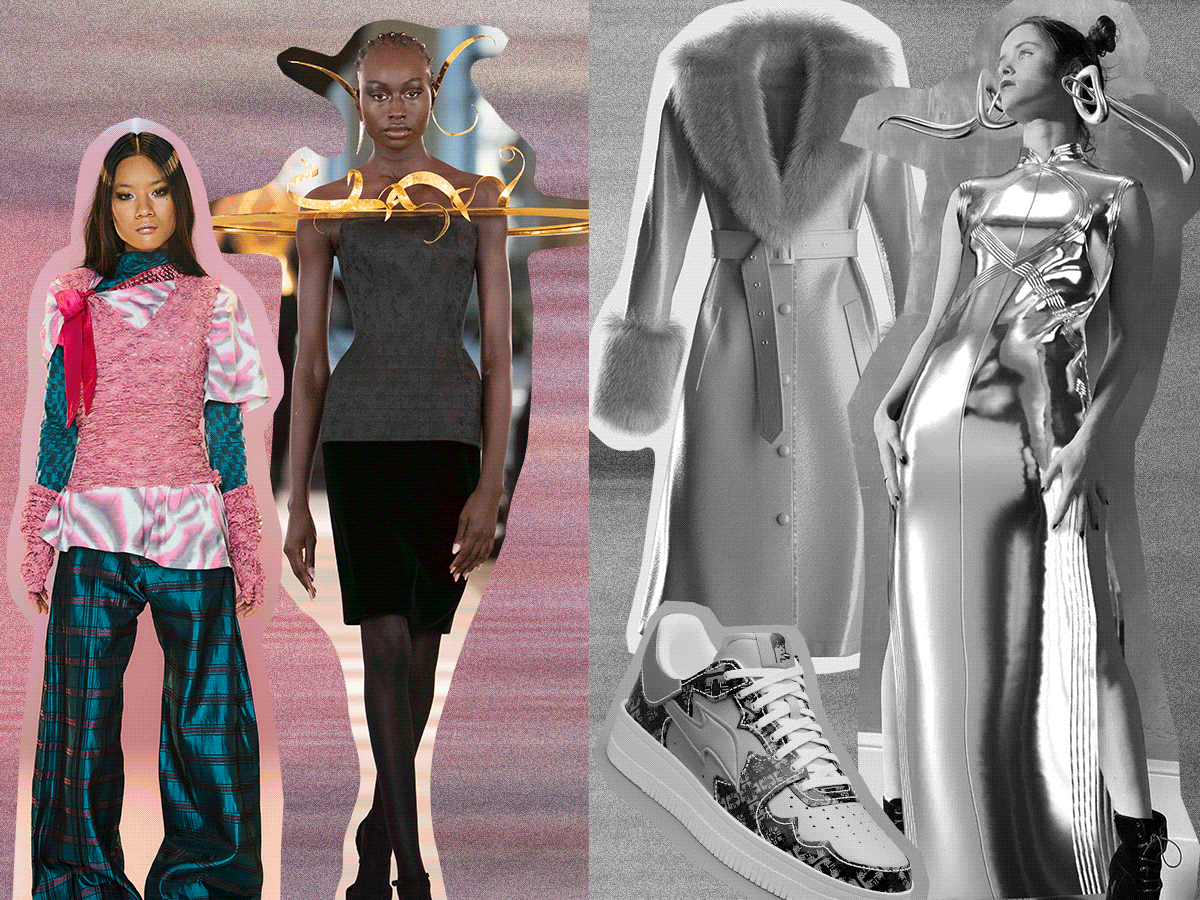
Whether you already own several NFTs or you still haven’t created a TikTok account, it’s no question that the Internet is rapidly evolving with or without you. Many of the developments we’ve seen in the past couple of years—namely, building out "the metaverse” and using NFTs to redefine fashion—are confusing to those of us who are simply content with the fact that Instagram is bringing back the chronological feed. Personally, my curiosity around digital fashion was only piqued after realizing its real-world implications on how we dress IRL. I don’t know about you, but after the last couple of years inside the house way more than usual, I am severely socially malnourished and just want to be out and about wearing cute clothes. Can I get an amen?
While I’m currently less interested in what my avatar is wearing and more interested in what I am wearing, after speaking with six experts in the digital fashion space, I learned that the two may have more in common than I thought. We discussed everything from how the metaverse will affect the trends we care about to the way we express ourselves through fashion as a medium and even how digital fashion can change how we get dressed in the morning. Keep scrolling to read through their insightful perspectives that set the stage for a long road ahead. Of course, I've also linked the coolest digital fashion pieces on the market right now along with some real-world dupes. Should I update my title to digital-fashion editor now?
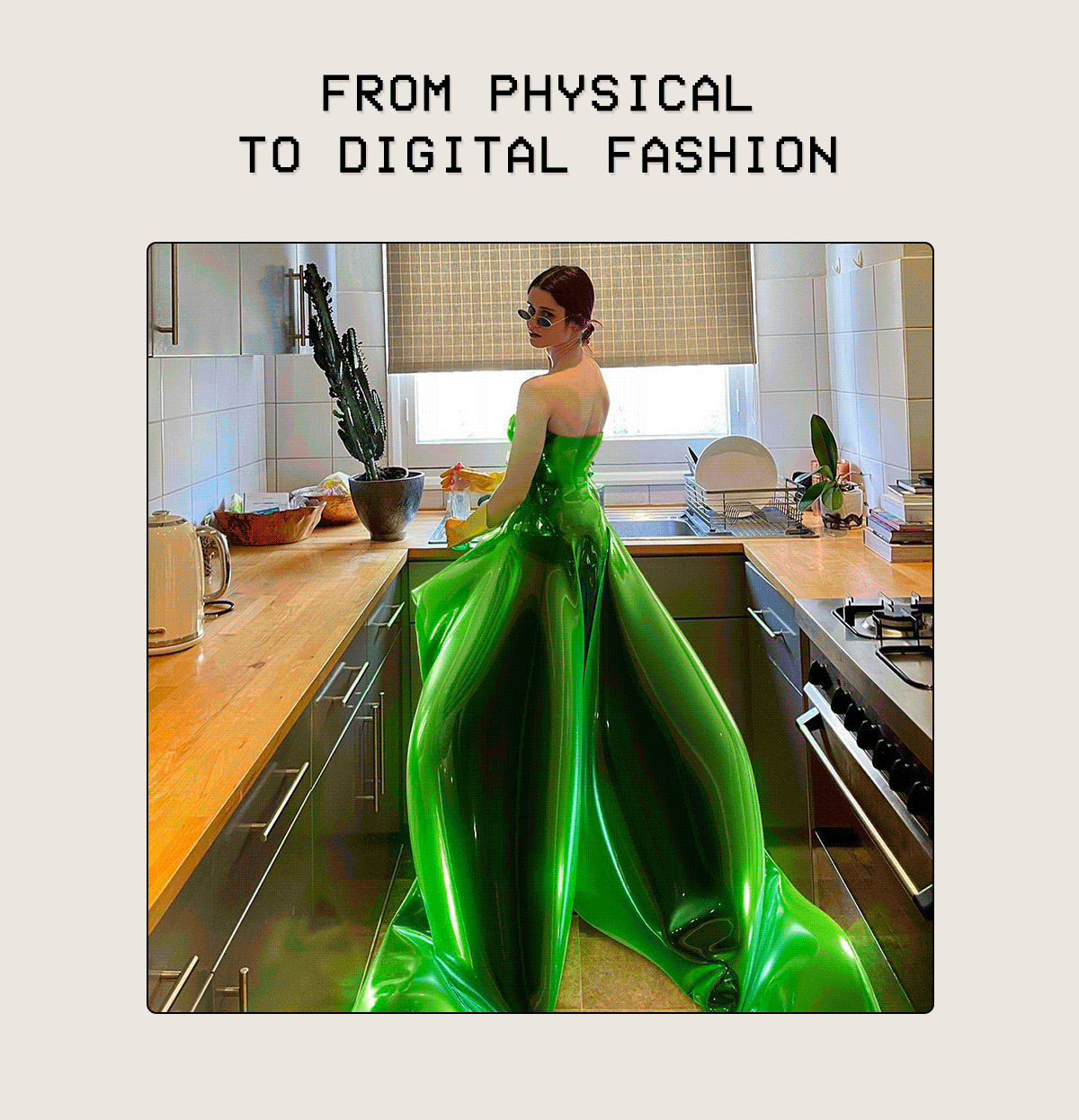
Since the beginning of time, fashion has been confined to the things we can create and wear IRL. However, in the metaverse, this isn’t a concern. "You can be anyone or anything,” says Daniella Loftus, founder of This Outfit Does Not Exist, a platform powering the shift toward digital fashion through education, exploration, and exhibition. Loftus continues, "This will bring in a whole new group of people who historically never used fashion as a medium because of the physical element.” Let’s take a moment to digest that. My first reaction is the fashion industry will never be the same. Now, everything from your physical form to fabrics to silhouettes is up for innovation. One example that’s already impacting IRL fashion is digital sneakers. By removing physical concerns like comfort, shape, and materials, digitally created sneakers reimagine footwear entirely.
My second reaction is will this lead to dissociation from our physical forms entirely? Behavioral psychologist, professor, author of The Psychology of Fashion, and founder of @psychologyforfashion Carolyn Mair, Ph.D, weighed in on my concerns: "Online identities can hide or exaggerate characteristics that exist IRL and/or create entirely new ones for the metaverse. Some people are more likely to find conflicting identities, IRL versus digital, confusing and problematic. On the other hand, creating an online persona can boost self-esteem that spills over to IRL.”
An upside to fashion pieces going digital is the benefit of being able to see our closets online. Yes, Cher’s iconic digital wardrobe on Clueless is closer than you think. As brands increasingly sell digital versions of our IRL pieces, you’ll be able to use your digital closet to plan outfits from the comfort of your sweats. As someone who has literally dreamt of this moment since the movie’s debut in 1995, I call this a full-circle moment.
Shop digital sneakers:

As one of the first digital-sneaker releases ever, this collaboration raised $3 million in seven minutes. Expect more from RTFKT, which was recently acquired by Nike.
Shop IRL sneakers:
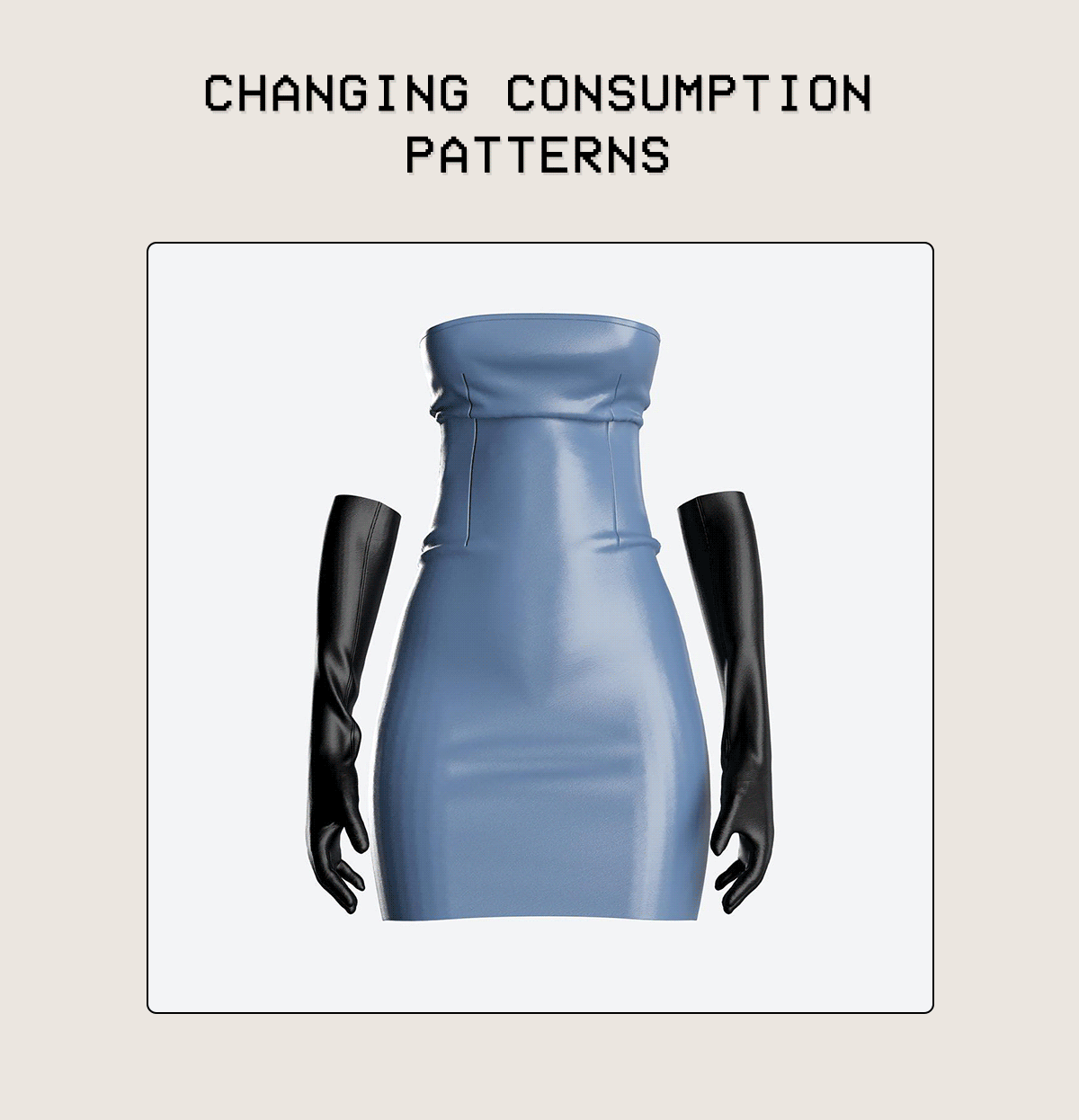
Fast fashion will also be transformed by the metaverse and digital-fashion movements—and good news, it’s for the better of the environment. Ramin Ahmari, founder of fashion house FINESSE, creates IRL fast fashion by leveraging AI data from metaverses to predict trends and forecast demand, which ultimately cuts out surplus and waste. FINESSE's sustainable model is even faster than other fast-fashion brands because of its ability to develop its products in 3D—a process Ahmari describes as the future of fast fashion, as it allows brands to respond more quickly to trends and be more sustainable in the process.
Both Ahmari and Loftus also point out that trying on clothes using augmented reality (AR) will help the consumer make smarter buying decisions, decreasing returns and in turn fashion’s carbon footprint overall. Ahmari believes that the long, meandering line ending in the Zara fitting room will soon be a relic as AR try-ons will be 3D-based in the next five to 10 years.
Shop digital fast fashion:
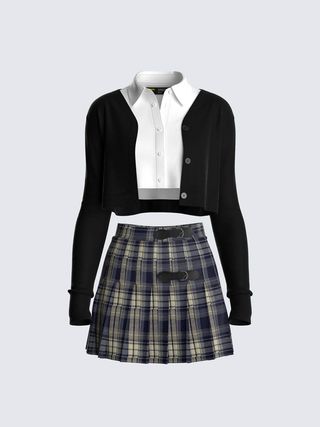
The Miu Miu S/S 22 skirt sensation will definitely inspire a variety of takes on the haute-prep aesthetic.
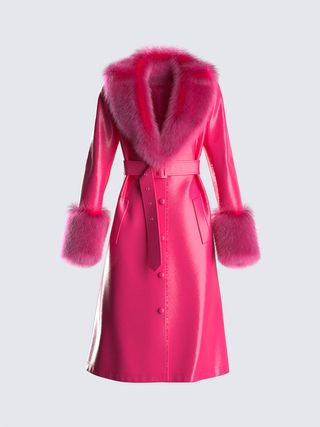
After wearing neutral tones for the past few years, I'm excited for the return of saturated hues.
Shop IRL pieces:

Mark my words: Tailored miniskirts are on the rise.
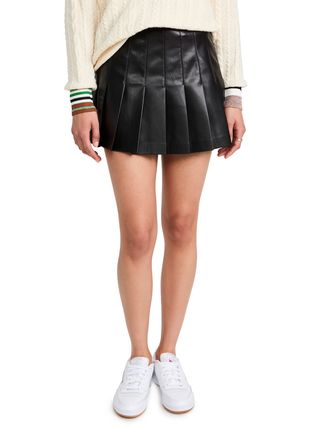
An elevated take on the pleated skirt that was everywhere last year.

Everything from the color to the fabric to the price is crying "pick me, choose me."
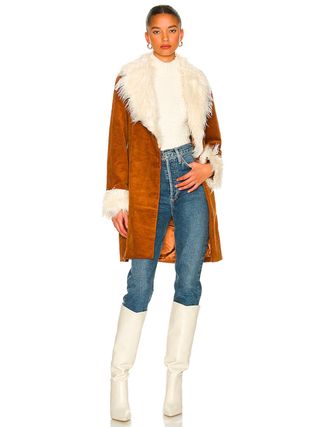
This Almost Famous–esque coat is light enough to be worn year-round.

To this point, fashion trends emerging from runway presentations, pop and indie culture, and (cough, cough) Who What Wear, gradually permeate the industry until ultimately trickling their way into stores and closets around the world. We’ve all seen the cerulean blue monologue in The Devil Wears Prada. How will the metaverse affect this trend cycle? "Digital fashion lowers the barrier to entry for lesser-known designers,” says Loftus, "which will lead to more diversification in the industry and give access to new trends and brands.” And it’s already happening. Digital fashion house The Fabricant has just closed the first season of its co-creation platform that gives anyone, anywhere, the means to become a digital fashion designer.
FINESSE is also a good example of how trends may start to trickle up. "Trends created in the metaverse will only create more data for us to pull from to create IRL clothing,” says Ahmari. For example, the uniquely textured fabrics and physics-defying silhouettes that can only be created digitally will open up an entire world of potential trends. Simply put, trends can very well start in the metaverse and make their way into our closets—and perhaps already have.
Further, spending increasingly more time in the metaverse will naturally impact our IRL decisions. "The more of our lives we spend functioning as an avatar in the digital world, the more we’ll inevitably want to start dressing like them IRL,” says Loftus adding, "and brands will realize this opportunity quickly.” Michaela Larosse, head of content at The Fabricant, corroborates this sentiment, saying, "Communities from various NFT projects are already dressing up as their avatar or profile picture at certain industry events."
As someone who has test-driven digital fashion and recently bought my first digital dress, I’m already seeing trends emerge via a handful of key digital fashion platforms including DressX and OpenSea. The digital aesthetic, for now, is defined by otherworldliness, an exploration of the human form, and overall looks a lot like the wardrobe in an ethereal sci-fi movie. As the options expand and digital fashion evolves, we’ll be here to give you the download on all the latest trends.
Shop the latest digital fashion trends:
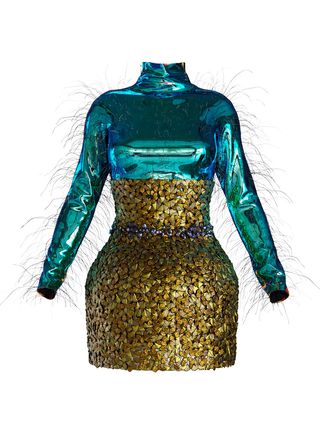
IRL, this dress is couture; in the metaverse, it's your morning-coffee-run outfit because why not?
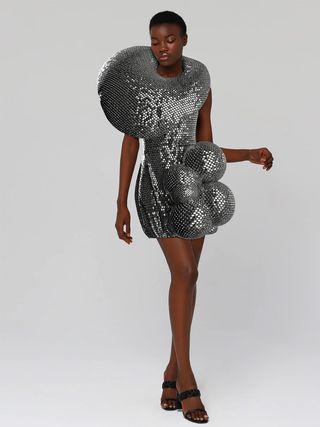
DressX created this outfit for those "eager to party online and offline throughout the metaverses." The Kinfolk era is fast re-approaching, but this time it'll be online.
Shop IRL pieces:
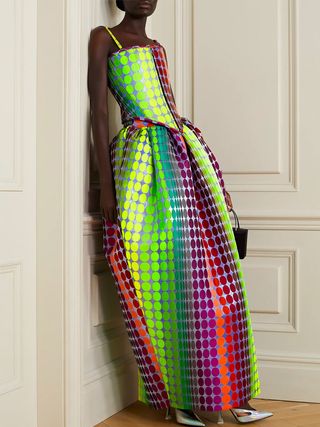
Identifiable design motifs and personality are what would make CJR pieces like this one super metaverse friendly.
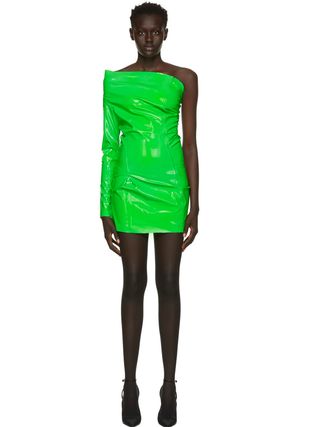
I'm not sure I've seen a dress this fluorescent before! And this is just the start. Digitally developed fabrics will likely unlock so many colors we've never seen.
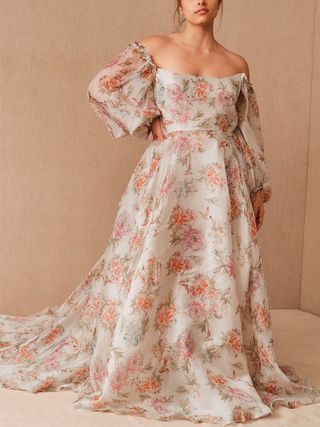
It'll be interesting to see how natural elements from the real world are incorporated into digital fashion.
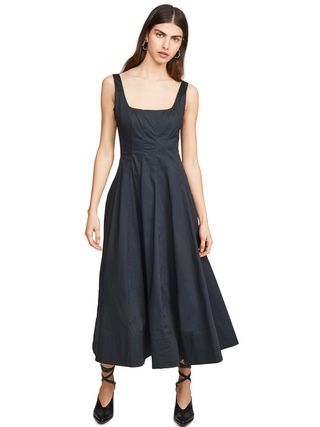
Practical and setting-appropriate dressing will still be a thing in the metaverse. For example, this dress can take you from your digital office to a digital drink with friends no problem.
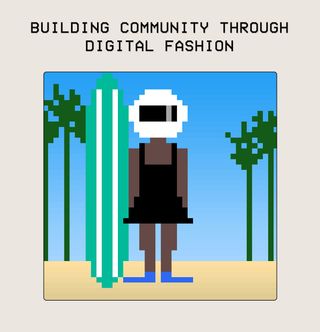
Everyone is looking to fashion to reflect their personality and the communities they identify with—just look at the rise of micro-trends and "core fashion.” Olaitan Ajilore, a fashion technologist at Studio Nein Palo and creative producer at Thrill DAO, believes there is an opportunity for brands to lean into community building through digital fashion and move away from the industry’s "you-can’t-sit-with-us” mindset. So how does this work? Some brands are starting to cater to their communities by attaching membership perks to their products. For example, Coach recently gifted NFTs that provide owners access to an exclusive bag in 2022 and may provide other perks later on. NFTs can also build brand loyalty by providing access to events, exclusive drops, and insider insights that previously only editors and influencers were privy to. Loftus points out that attaching perks also affects a brand’s bottom line, notably in the luxury market. "As a fashion brand, you’ll have succeeded if you are engaging a new consumer base by bringing them into your world through NFTs and experiences and reaching those who can’t normally afford your products, for example, younger consumers,” she says.
While I will always gleefully accept gifts of Chanel and Hermès, brands that provide memorable experiences, promote shared values, and introduce me to like-minded individuals will capture my heart (and my credit card info) forever. Digital fashion expands a brand’s purview to include much more than the physical, which has the ability to make our shopping decisions a better reflection of who we are as people. Just saying, an Hermès NFT granting access to an exclusive club could be way more valuable than a Birkin someday.
Shop a designer fashion NFT:

These Coach NFTs were given away for free this past December and have since appreciated into the tens of thousands of dollars.
Shop IRL pieces:
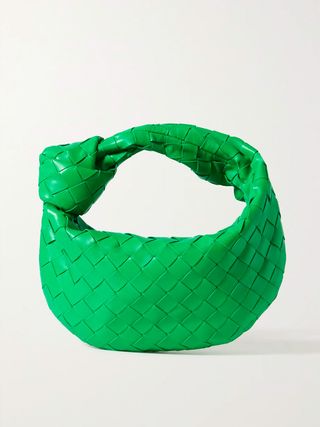
Imagine a world where having this Bottega bag is your ticket to insider events.
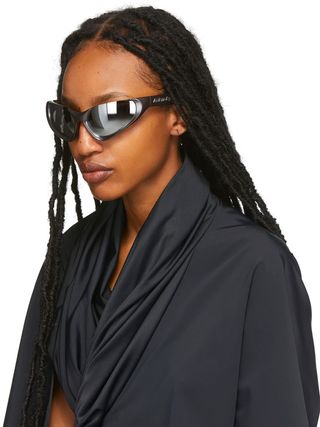
The day Meta goggles look like these Balenciagas is the day I'll be purchasing some.

The movement of these disc sequins makes this bag a winner online and IRL.

Interesting fabrics like this one will begin trending pretty soon.
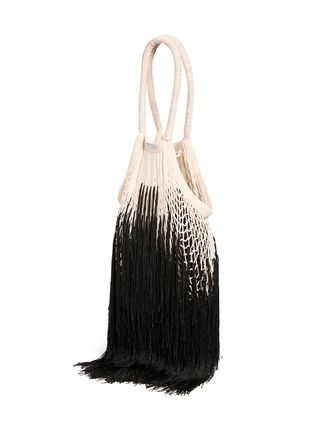
Fringe and netting were huge on the S/S 22 runways, and Petit Kouraj incorporates both.
Next up, I Dug Through Nordstrom's Big Sale—34 Epic Finds I Want in My Cart Right Now
-
 I'm a Fashion Editor—I Reach For These 2 Pieces When I Don't Know What to Wear
I'm a Fashion Editor—I Reach For These 2 Pieces When I Don't Know What to WearReady in 10 minutes or less.
By Jennifer Camp Forbes
-
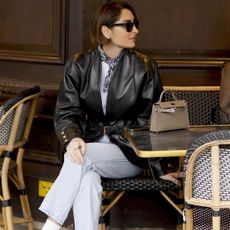 French Women Are Wearing Socks With These Classic Shoe Styles This Spring
French Women Are Wearing Socks With These Classic Shoe Styles This SpringChic as always.
By Jennifer Camp Forbes
-
 Found: The Only Shoe Style You Need for Expensive-Looking Spring Outfits
Found: The Only Shoe Style You Need for Expensive-Looking Spring OutfitsIt's a classic for a reason.
By Jennifer Camp Forbes
-
 Reformation Finally Launched Swimwear, and the Collection Is Pure Elegance
Reformation Finally Launched Swimwear, and the Collection Is Pure Elegance*Orders every suit.*
By Eliza Huber
-
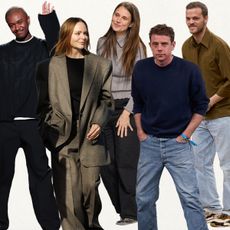 It's True—Designers Were Fashion Month's Best Dressed Patrons
It's True—Designers Were Fashion Month's Best Dressed PatronsSometimes, the simplest outfits win.
By Eliza Huber
-
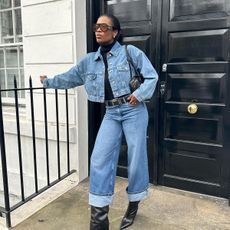 And Now, 5 Elevated Ways to Wear Your Jeans in 2024
And Now, 5 Elevated Ways to Wear Your Jeans in 2024Denim devotees, unite.
By Grace O'Connell Joshua
-
 I'm Saving This '90s Supermodel's Airport Looks for All My Travel Days in 2024
I'm Saving This '90s Supermodel's Airport Looks for All My Travel Days in 2024Each one is comfortable and super chic.
By Jennifer Camp Forbes
-
 31 Chic Finds for When Toteme and The Row Are the Vibe But Not in the Budget
31 Chic Finds for When Toteme and The Row Are the Vibe But Not in the BudgetExpensive-looking outfits are on the horizon.
By Jennifer Camp Forbes
